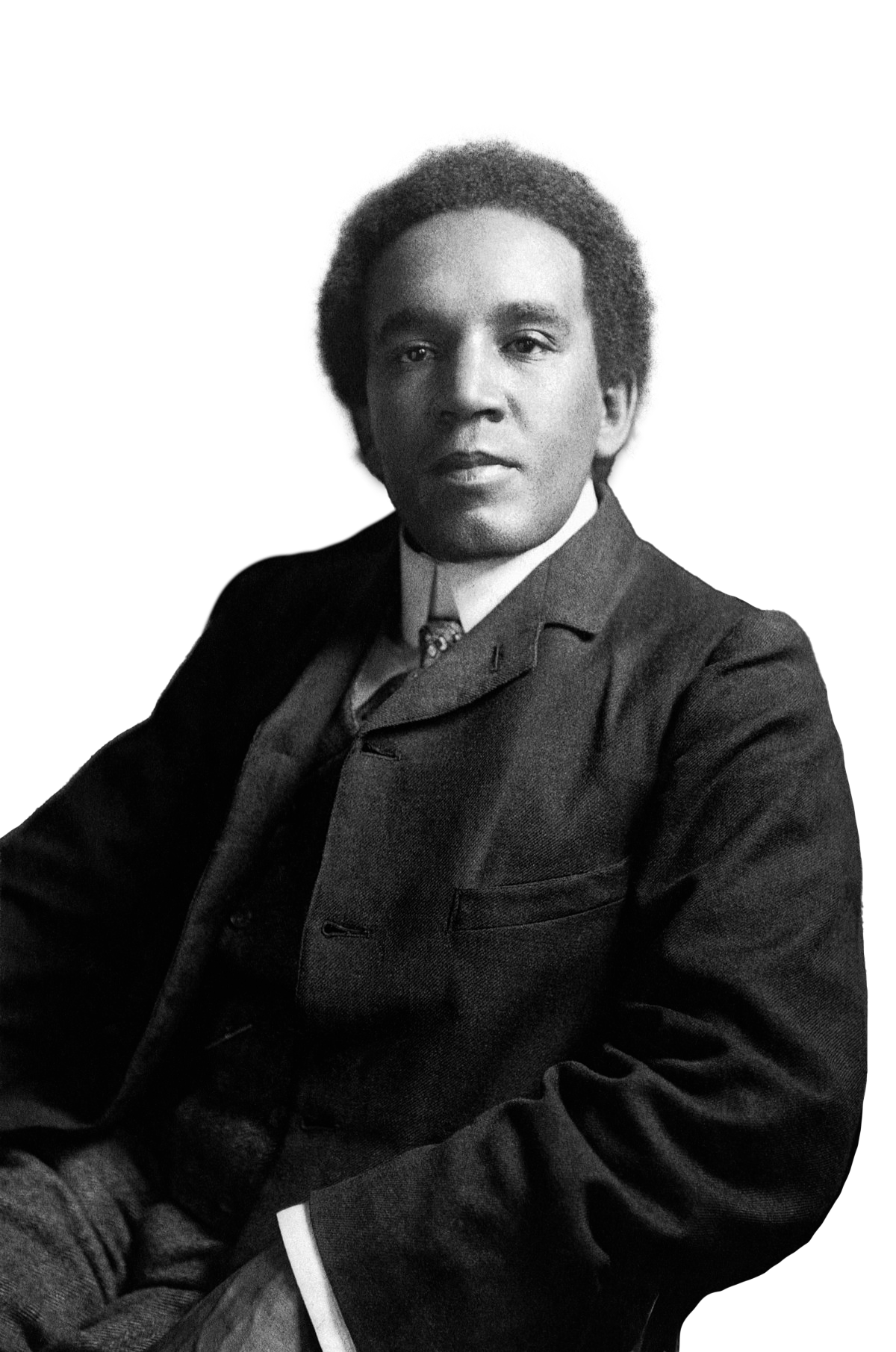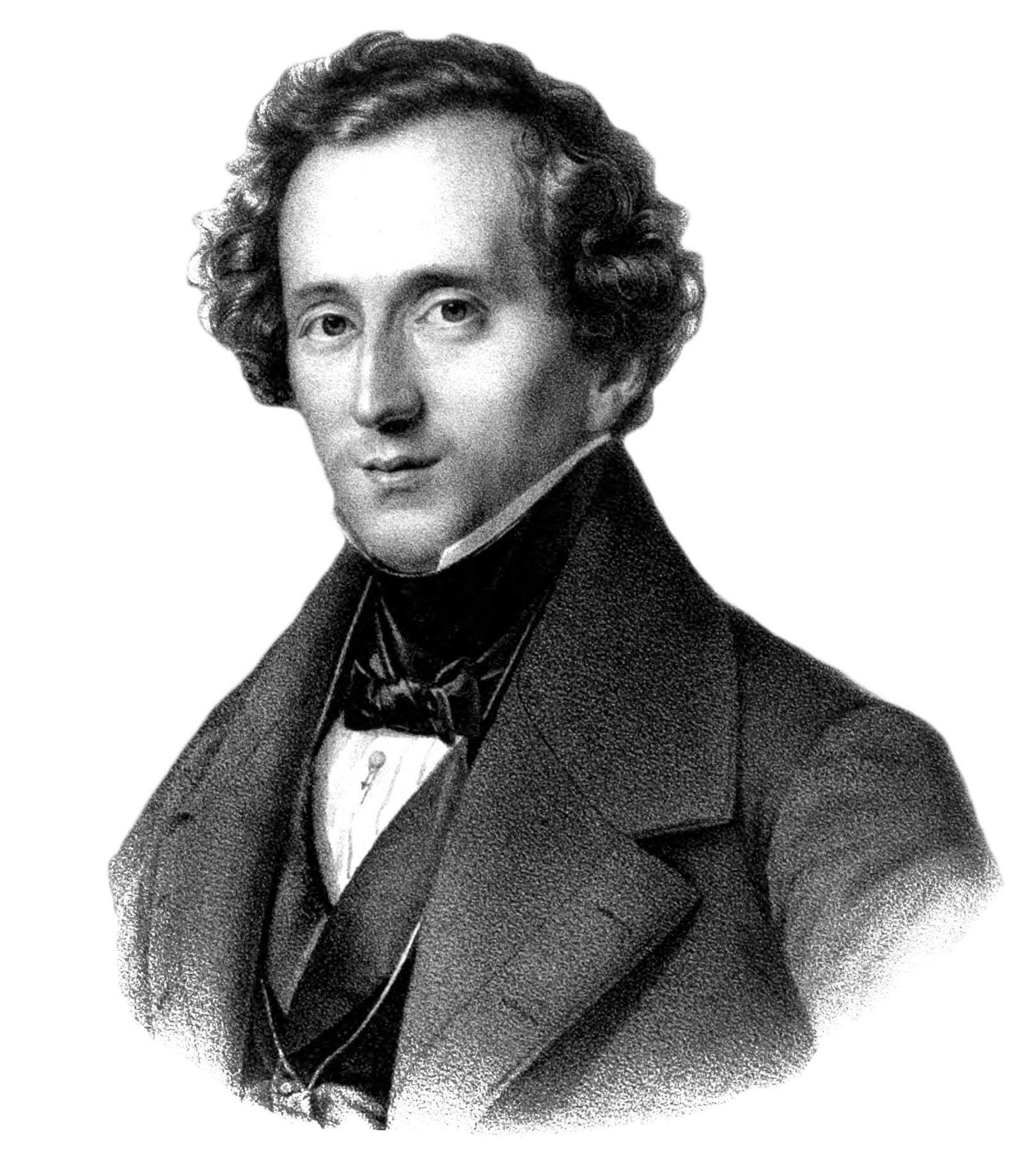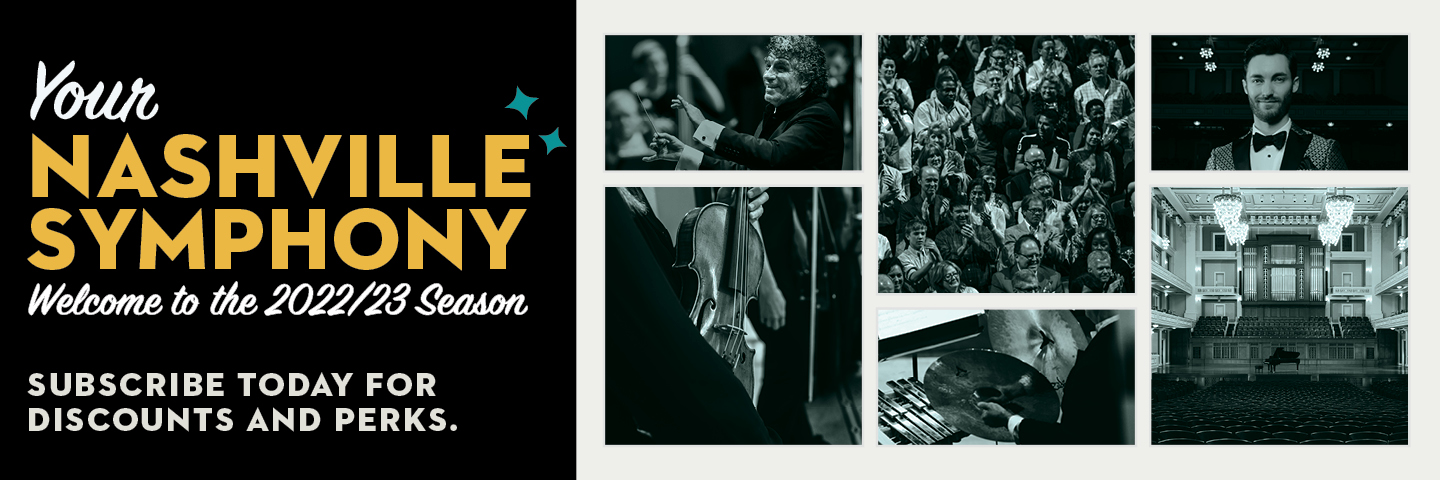
Alongside two of the most popular works in the orchestral repertoire—Felix Mendelssohn’s Violin Concerto and Claude Debussy’s La Mer—our program introduces rarities from the remarkable Black composer Samuel Coleridge-Taylor, who is long overdue for rediscovery. Coleridge-Taylor enjoyed a sensational success with his music inspired by Longfellow’s epic poem Hiawatha, but he subsequently fell into oblivion—an indication of what the cultural historian Joseph Horowitz calls “the vexed fate of Black classical music” in his most recent book. Hiawatha: Suite from the Ballet is the last score Coleridge-Taylor was working on at the time of his early death.
Felix Mendelssohn similarly died in his late 30s, having started out, also like Coleridge-Taylor, as a prodigy composer. Mendelssohn struggled to make his Violin Concerto meet the standards of his relentless perfectionism. However familiar this music is, his achievement continues to astonish with its balance of elegance and power. And Claude Debussy’s “three symphonic sketches” in La Mer have been described as “an impressionism of the emotions, translated into harmonies unique to the world.”
 |
|
|
|
|
|
|
|
|
|
|
|
|
The premiere of Samuel Coleridge-Taylor’s early choral work Hiawatha’s Wedding Feast in 1898 was described by Sir Hubert Parry, a key mentor to the English composers who emerged in the early 20th century, as “one of the most remarkable events in modern English musical history.” Enthusiasm for the piece continued well into the new century; the score went on to sell hundreds of thousands of copies. But Coleridge-Taylor immediately sold the rights and thus never benefited from the royalties and financial security that should have been his due. He would die at the tragically young age of 37, his ill health likely exacerbated by the stress of providing for his family.
Named after the Romantic poet Samuel Taylor Coleridge, Coleridge-Taylor was the illegitimate child of the physician Dr. Daniel Taylor, a Sierra Leone Creole (descendants of African Americans who had been enslaved), and Alice Hare, the white English mother who raised him after the father returned to Africa. He showed talent at a young age and was encouraged by his maternal grandfather to take violin lessons.
At 15, he entered the Royal College of Music, where he studied both violin and composition. Coleridge-Taylor was later influenced by the poet and writer Paul Laurence Dunbar and other African American intellectuals and made three trips to the United States, at one point touring with singer and Dvořák protege Harry T. Burleigh. President Theodore Roosevelt invited him to the White House.
While such peers as Ralph Vaughan Williams developed their voice through the rediscovery of English folk traditions, Coleridge-Taylor sought inspiration in both New World sources and traditional African music and its manifestations across the African Diaspora. His ongoing engagement with The Song of Hiawatha, Henry Wadsworth Longfellow’s epic narrative poem from 1855, reflects his fascination with Native American lore. Longfellow reworked oral traditions from the Ojibwa people into a fictional account of the life of the legendary titular chief, most famously including the tragic love story that unfolds between him and the figure of Minnehaha. Dvořák, whom Coleridge-Taylor admired, had also been profoundly influenced by the Hiawatha story when he wrote his New World Symphony.
Following Hiawatha’s Wedding Feast, Coleridge-Taylor composed two more cantatas based on this material—The Death of Minnehaha and Hiawatha’s Departure—to form The Song of Hiawatha trilogy. The first part especially became such a sensation through regular revivals at the BBC Proms until the Second World War that it has been compared with Handel’s Messiah and Mendelssohn’s Elijah, the two choral blockbusters of the era.
Coleridge-Taylor was astonishingly productive and composed in a wide variety of genres, though the success of his choral music for Hiawatha has obscured those other achievements. He returned to the Hiawatha theme in his very final project, a ballet intended for the London stage. Coleridge-Taylor died while he was still composing the piano score. Percy Fletcher, a composer and music director in London’s theater scene (remembered mostly for his band music), orchestrated the sketches in 1919 to create Hiawatha: Suite from the Ballet.
WHAT TO LISTEN FOR
The Suite is in five movements that correspond to (or even take their titles directly from) episodes in Longfellow’s epic poem. The musicologist Jeremy Dibble, an authority on British music, notes that each movement “was essentially based on an individual canto from Longfellow’s poem.” First is “The Wooing,” in which Hiawatha encounters Minnehaha, who comes from a warring tribe. “The Marriage Feast” is cast as an energetic scherzo with a contrasting central section. The third movement comprises two sections (“Bird Scene” and “Conjuror’s Dance”) that depict the disruptive appearance of the trickster character Pau-Pukke-Keewis at the wedding feast. He has the ability to transform himself into a bird and is hunted by Hiawatha. The mood becomes somber and wistful in “The Departure” as the Chief envisions the future impact of the encroaching white interlopers. The Suite concludes with Hiawatha’s promise to return in “Reunion,” ending with an affirmative C major climax for the full orchestra.
Scored for 2 flutes (2nd doubling piccolo), 2 oboes, 2 clarinets, 2 bassoons, 4 horns, 2 trumpets, 3 trombones, tuba, timpani, percussion, harp, and strings
 |
|
|
|
|
|
|
|
|
|
|
|
|
|
|
|
It’s tempting to take Felix Mendelssohn’s Violin Concerto for granted—as if this cherished music has always been here. Yet even at the height of his powers as a lionized musician—composing, performing, and shaping musical tastes throughout Europe—Mendelssohn worried himself into a state of nervous anxiety about getting this piece just right. That it would become prized as one of the finest (and most imitated) gems in the concerto repertoire hardly made its birth pangs any less troublesome for the composer. The eminent Mendelssohn authority R. Larry Todd writes that he “came to regard the concerto more and more as a serious art form…in an age when variation and concerto form all too often were represented by fatuous examples of mass-produced virtuosity. Mendelssohn continued to remain aloof from such commercialism.”
This may partially explain the work’s unusually long gestation. (An unpublished youthful violin concerto in D minor, written in 1822, nearly fell into oblivion but was revived in the 1950s by Yehudi Menuhin, who also rescued the third and last of the composer’s sonatas for violin and piano.) Mendelssohn intended as early as 1838 to write a concerto for violin virtuoso and teacher Ferdinand David, a close friend since his youth and concertmaster of the Leipzig Gewandhaus Orchestra, of which the composer was at the time music director.
Other tasks intervened, but eventually Mendelssohn returned to his original plan, completing the score in September 1844. During the process, he corresponded at length with David to work through aspects of technique and questions of balance between the soloist and the orchestra. Such a close collaboration between composer and performer in itself set a pattern that has been repeated in the creation of many subsequent concertos.
WHAT TO LISTEN FOR
As in the Symphony No. 40 in G minor by his beloved Mozart, Mendelssohn draws us right into the middle of things with remarkable drama and economy. A measure and a half, punctuated by timpani and double bass pizzicatos, sets up the turbulent backdrop over which the solo violin traces its yearning main theme.
The soloist’s sudden entrance—without the extended business of setting the stage conventionally undertaken by the orchestra—represents just the first of several innovations Mendelssohn employs. An especially influential one is his placement of the cadenza at an earlier juncture so that is serves as a link between the development and recapitulation rather than as a showy “aside” near the end of the movement.
Mendelssohn moreover breaks with convention to join all three movements seamlessly together. Varying a move from Beethoven’s Emperor Concerto, he has a sustained bassoon note rise by a half-step to prepare for the serene Andante in C major—a wordless poem that celebrates the violin’s singing voice.
At the end of the Andante, an interlude reprises the contours of the tragic opening theme before fanfares lead into the springy rhythms of the finale, now in E major—the key of the Midsummer Night’s Dream music of his youth, the spirit of which is rekindled in this effervescent movement. However hard won as a creative act, Mendelssohn makes the journey from the passionate intensity of the opening to the finale’s giddy high spirits seem inevitable.
In addition to solo violin, pairs of flutes, oboes, clarinets, bassoons, horns and trumpets; timpani; and strings
 |
|
|
|
|
|
|
|
|
|
|
|
|
|
|
|
Just two months before the premiere of Hiawatha’s Wedding Feast at the Royal College of Music in late 1898 put him on the international map, Samuel Coleridge-Taylor enjoyed another triumph with a much shorter work, the Ballade in A minor, Op. 33. The 23-year-old composer had been heralded by the older Edward Elgar, who was on the verge of his own breakthrough with The Enigma Variations, which premiered in 1899.
The critic August J. Jaeger, who was an editor at Coleridge-Taylor’s music publisher Novello—and one of the friends “depicted” in the Enigma Variations, in the celebrated “Nimrod” Variation—brought the young composer to the attention of Elgar. (Sadly, the same publisher took advantage of Coleridge-Taylor by having him sell his rights to Hiawatha’s Wedding Feast, which ended up depriving him of a fortune.) After looking over some of his work, Elgar recommended Coleridge-Taylor as an excellent candidate for a commission from the prestigious Three Choirs Festival, describing him as “far and away the cleverest fellow going amongst all the young men.”
The precocious Coleridge-Taylor composed the Ballade in A minor as a result, dedicating it to Jaeger. One reviewer wrote that the music “seems to glow with intensity and life, and it holds the attention with relentless grasp. The success of the work tonight was instantaneous.” Another drew a connection with the approach of Dvořák, arguing that “this remarkable work provides comparisons with the best work of the Bohemian school.”
Coleridge-Taylor would be invited back to contribute several more works to the Three Choirs Festival. The genre of the instrumental ballade had emerged at the height of Romanticism earlier in the 19th century and was usually associated—thanks above all to its exemplars in the work of Frédéric Chopin—with a single-movement composition for solo piano that implied a poetic, folklike narrative, in keeping with the literary origins of the term. An apocryphal story recounted by W.C. Berwick Sayers, a personal friend and his first biographer, claims that Coleridge-Taylor found the impetus for the piece when he happened to listen one afternoon to the repetitive sounds made by a piano tuner.
WHAT TO LISTEN FOR
The Ballade opens with a colorful outburst that points to the composer’s dramatic flair. The main idea has an alluringly rhythmic power that Coleridge-Taylor combines with brilliantly shifting orchestration and striking changes of key later in the piece. Restless and impetuous, this material gives way to an idea that is passionately lyrical and expansive. The relationship between these two kinds of music generates the “story” told by the Ballade, for which the composer left no programmatic description. A thrilling call to pay attention to the young composer’s talent, the Ballade was praised as “a forecast of a great and brilliant career—if only health and strength continue, and if Mr. [Coleridge-Taylor] escapes the many dangers that beset a rising artist.” Tragically, his health would not continue, and Coleridge-Taylor died a mere 14 years later, at the age of 37 (two years younger than Mendelssohn was at his death).
Scored for 2 flutes and piccolo, 2 oboes, 2 clarinets, 2 bassoons, 4 horns, 2 trumpets, 3 trombones, tuba, timpani, cymbals and strings.
 |
|
|
|
|
|
|
|
|
|
|
|
|
|
|
|
Claude Debussy once stated that he was “destined for a sailor’s life” and had turned to a life of music only “by chance,” yet he was fully aware of music’s unique power to evoke the external world while remaining independent of it. He grew impatient with colleagues who took a literalist approach to La Mer by identifying its events with “picturesque” qualities, assuming his intention was a sonic imitation of natural phenomena. The composer’s biographer Louis Laloy lauded La Mer as a work of “full-blown maturity” that revealed “an impressionism of the emotions, translated into harmonies unique to the world.”
It was not so much a particular seascape as the memories unlocked and awakened by thoughts of the sea that guided Debussy’s imagination during the lengthy gestation of La Mer (between 1903 and 1905). For the most part, he composed this music in distinctly landlocked locations.
Among the Japanese prints with which Debussy decorated his studio walls was Katsushika Hokusai’s 19th-century woodblock print The Great Wave off Kanagawa, which had already become iconic among his fellow Parisians. Debussy chose a section from this print to illustrate the first edition of La Mer. Hokusai’s stylized depiction of the sea’s immensity, together with his animated use of detail, provides a key to the composer’s richly suggestive method of painting with the tones and timbres of his large orchestra.
Debussy’s nuanced understanding of the relationship among nature, memory, and the creative imagination led him to reject conventional musical forms and procedures, such as the rigorous development of ideas associated with Brahms and the German symphonic tradition in general. (Debussy once jokingly defined a symphonic development section as the signal for him to go out and enjoy a cigarette break.)
La Mer fills a unique position in Debussy’s lifework. Like several of his most significant pieces, it is organized as a triptych, but these three parts cohere, conceptually and through thematic cross-referencing, in a way that makes each interdependent on the others. Yet these “three symphonic sketches” do not really conform to a unified symphonic design, and they cannot be easily reduced to literary descriptions—certainly not without losing most of the actual details of the music. La Mer wields much of its effect through the power of suggestion. No wonder that it has influenced so many film composers.
WHAT TO LISTEN FOR
The first sketch, “From Dawn to Noon on the Sea,” shows how Debussy uses register, instrumental color, and volume—starting with soft, cryptic sounds rumbling from the depths—to suggest the wondrous natural spectacle of day emerging over oceanic vastness. Kaleidoscopic sonorities generate a sense of continual flux, which leads thrillingly to the climactic burst of high noon.
Debussy’s highly refined instrumentation in “Play of the Waves” flickers and dances to a subtly pervasive triple time meter—a waltz of the waves. The mood lightens before he proceeds to depict the awe-inspiring, elemental power of the sea in the final sketch, “Dialogue of the Wind and the Sea.” Here, the music surges and swells with wild, vehement fury. A seductive melody, beckoning like a Siren—or some other hallucination—floats in and out of focus. Finally, Debussy unites the full ensemble in a triumphant outpouring, a rush of sound that is ecstatic and liberating.
Scored for 2 flutes and piccolo, 2 oboes, English horn, 2 clarinets, 3 bassoons, contrabassoon, 4 horns, 3 trumpets, 2 cornets, 3 trombones, tuba, timpani, percussion, glockenspiel, 2 harps and strings
Thomas May is the Nashville Symphony’s program annotator.

